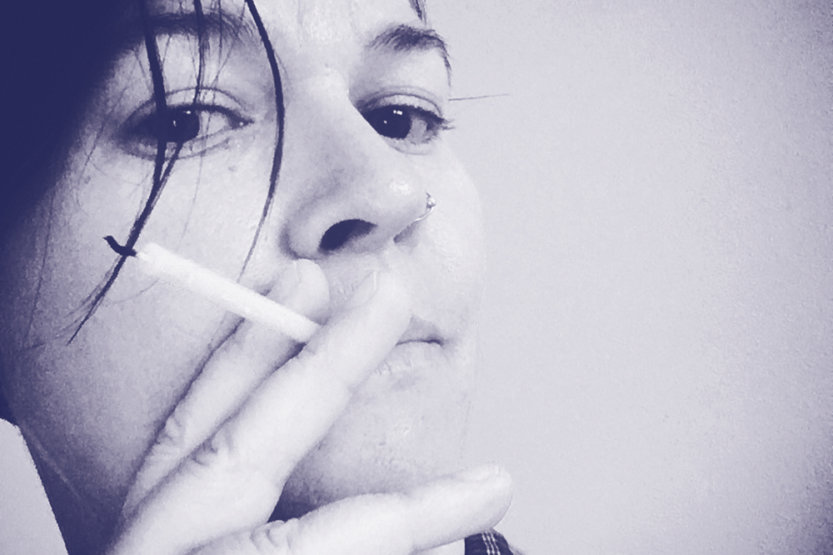Fire Bearer
 Artist Karen Sixkiller (aka k6) infuses sociopolitical commentary into art that draws on her Native heritage. (Image courtesy of k6)
Artist Karen Sixkiller (aka k6) infuses sociopolitical commentary into art that draws on her Native heritage. (Image courtesy of k6) A Cherokee legend tells of ancient animals praying for warmth to survive the winter on their island. Unetlanvhi (“the Creator”) answered by striking a tree with lightning, setting it on fire. After several bigger, stronger and faster animals failed to capture the first sparks, a water spider stepped up to catch the fire in a pot she made for it and bring it back to the other animals.
That tiny but mighty arachnid inspired Karen Sixkiller, MA ’12 LAS, to create “Ember,” a sculpted bronze spider peering down from a seven-foot-high web, a red crystal sphere resting in a bronze pot on her back, representing the fire she captured. For Sixkiller, the outdoor piece exemplifies empowerment. “Everyone thought the spider was too little and weak, but it’s the underdogs who can work and move in ways that change the world,” she says. Plus, she says, “I like that she’s a chick.”
Her works strive to represent the underrepresented. “Who Controls the Board?”, a handcrafted porcelain chess set, drives home the intersection of modern-day school shootings and the ongoing discovery of Indian boarding school burial sites.
Sociopolitical commentary also is infused into “Cancer Sticks,” her skull-emblazoned beaded cigarettes, as well as “Echo Chamber,” a beaded-suede smartphone case featuring a mouth full of fake teeth and cultured pearls screaming, “False wisdom” on one side and a pooping Twitter bird on the other.
The Washington state resident, who also goes by the name k6, says her goal is “to surprise people, get them asking questions and [to] share cultural understanding.” She adds, “For so many people, Native Americans are in the past. We’re from the John Wayne Western era. But we’re still alive and evolving,
just like everyone else, and we have perspectives on modern issues informed by our cultures.”

